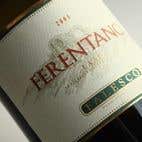From €11, US$13.80, £13.49
Find this wine.
You wouldn't know it from the name but Falesco, Ferentano 2006 IGT Lazio is made from a rare indigenous grape variety called Roscetto (also spelt Rossetto). That doesn't mean it tastes 'right weird', to borrow one of Jancis's current tasting terms. In fact it's classy stuff. There's a definite aroma of oak on the nose but it's not overpowering and the oak is clearly high quality. The fruit flavours are mainly citrus – lemon and, after some time in the glass, delicate orange – but it's not really a wine you want to pick apart into its constituent components. It's concentrated, long, creamy-textured and fresh and reminded me strongly of the best white St-Aubins from Burgundy. When I came back to the glass after it had had time to respond to the air, there were also hints of biscuit and honey, even though it's completely dry. A big wine yet showing very good balance between depth of fruit, oak and fresh acidity.
This rare white variety is indigenous to Lazio, in central Italy, and was historically grown south of Rome in the Castelli Romani region and near the Lazio-Umbria border, between Orvieto and the Lago di Bolsena. It was close to extinction in the 1960s but had never been very popular with farmers because of its low yields. It continued to be used in very small amounts (up to 15%) blended with Trebbiano and Malvasia in Est! Est!! Est!!! de Montefiascone and it's at Montefiascone that the grapes for Falesco's Ferentano are grown.
 The name Roscetto alludes to the fact that when the grapes are fully ripe, they turn pinky red and many growers used to pick the grapes early to avoid the colour, even though this meant they also avoided the great fruit flavours that come with full ripeness.
The name Roscetto alludes to the fact that when the grapes are fully ripe, they turn pinky red and many growers used to pick the grapes early to avoid the colour, even though this meant they also avoided the great fruit flavours that come with full ripeness. Brothers Ricardo and Renzo Cottarella, both oenologists, set up Falesco in Montefiascone in the province of Viterbo in Lazio in 1979, keen to rescue and promote the region's indigenous varieties. After several years of research, they produced their first vintage of Ferentano, made from 100% Roscetto, in 1998. In order to get the most out of this variety and to release the yellow pigment into the wine, they flash freeze the grapes so that the temperature in the berries drops from 30 °C (86 °F) to -5 °C (23 °F). They then cold soak the grapes – 10 hours at 8 °C (46 °F) – to extract flavour from the skins. The grapes are gently pressed to stainless steel tanks, where alcoholic fermentation begins, at around 13-15 °C (55-59 °F). The part-fermented must is then put in oak barriques to complete fermentation and malolactic conversion.
The wine is widely distributed in the US (imported by Winebow) and, according to the producer, also available in the following countries: Belgium, Germany, France, Italy, Russia, Denmark, Sweden, Finland, Japan, China. If you are in Germany, Berdux Weine seems to have it on special offer for the bargain price of €7 (usually €10.90). Follow the www.wine-searcher link below for specific retailers. In the UK, importer Berkmann Wines supplies the Ferentano to AG Wines, Hailsham Cellars, Slurp and Zelas and also to top Italian restaurants such as Locanda Locatelli and Manicomio.
Find this wine.

